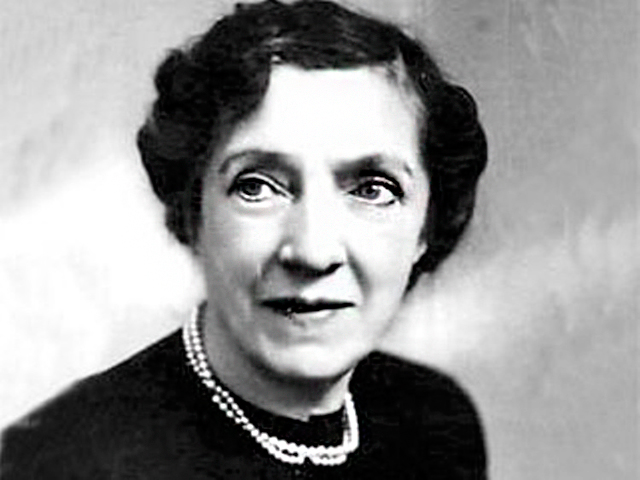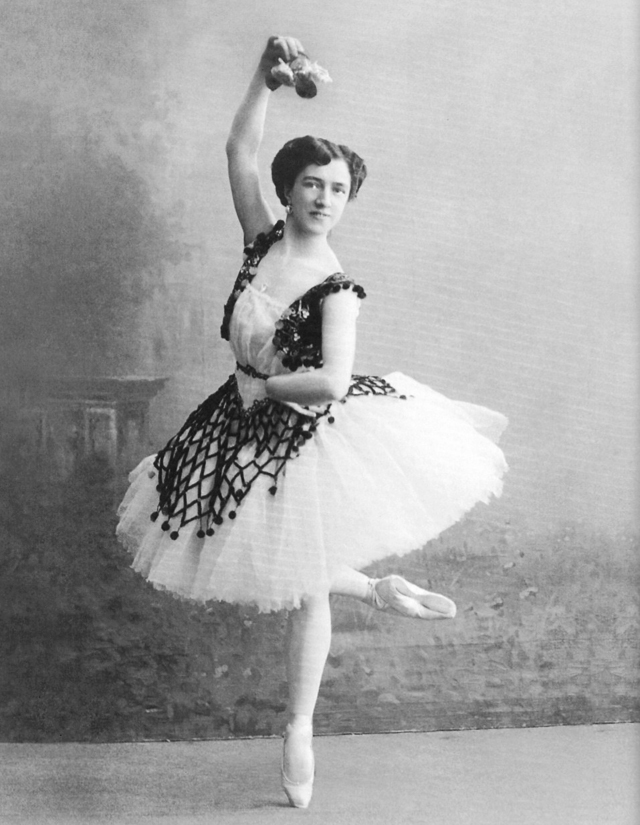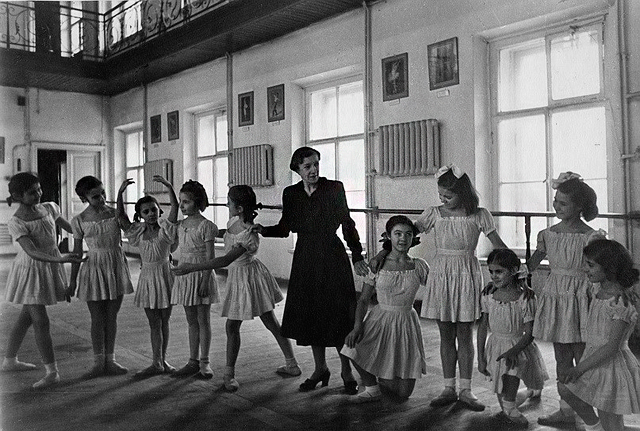Agrippina Y. Vaganova
Agrippina Vaganova (1879-1951) was a distinguished Russian ballet dancer, choreographer and teacher. She created her own method of teaching ballet, a method that has influenced ballet pedagogy throughout the world. Her book, ‘Basic Principles of Classical Ballet’ (1934), which outlines Professor Vaganova’s ideas on ballet technique and pedagogy, is still regarded as the standard of ballet instruction.

Born on June 26, 1879, in St. Petersburg, Russia, Agrippina Yakovlevna Vaganova was the daughter of an usher at the Maryinsky Theatre and was exposed to ballet at a very early age. She attended the Imperial Ballet School in St Petersburg and, after her graduation in 1897, was taken into the Maryinsky corps de ballet. Vaganova’s talent was soon recognized by the veteran choreographer Marius Petipa, and so brilliant were her solos in such ballets as Coppelia, Don Quixote and The Little Humpbacked Horse, that she became known to the critics as the “Queen of Variations". Vaganova received the title of Ballerina in 1915, a year before her farewell performance.

Just before the revolution of 1917 Vaganova left the stage and devoted her life to teaching. For a time she taught at Akim L. Volynsky’s private School of Russian Ballet, however later changed it for the Leningrad Choreographic School. From 1921 until her death in 1951, Agrippina Vaganova had been teaching senior students completing the last three years of ballet training at the Leningrad Choreographic Academy.
From 1931 to 1937 Vaganova also held the position of Artistic Director of the Kirov Ballet. During this period, she staged her versions of both Swan Lake and Esmeralda. Along with Rostislav Zakharov’s The Fountain of Bakhchisarai and Vasily Vayonen’s The Flames of Paris, the ballets of the Vaganova period are still considered a part of the classical heritage.
However, Vaganova’s most vital contribution to ballet was her teaching method, which she developed working both at the Kirov (Maryinsky) Theatre and the Leningrad Choreographic School, presently known as the Vaganova Ballet Academy. Through the thirty years she spent teaching ballet and pedagogy, Vaganova developed a precise technique and system of instruction. Vaganova’s system synthesized what she had learned from her masters with her own concepts of the possibilities of movement and technique. The result was a brilliant, clean technique combined with an amplitude of movement and a suppleness of the upper body that are the hallmarks of the Vaganova style.

Many of Vaganova’s students became brilliant ballerinas. The first, in 1925, was Marina Semeonova, a ballerina of great depth and eloquence. She was followed by a few other dancers of different personalities and talents, however all of them demonstrated outstanding qualities of Vaganova’s schooling. Olga Jordan was dazzling and flowing, while Galina Ulanova did not only concentrate on technical perfection but also revealed dramatic depth in well-known roles. When Josef Stalin became aware of her talent, he ordered her to be transferred to the Bolshoi Theatre, where she was a Prima Ballerina for 16 years. Another student of Agrippina Vaganova was Tatiana Vetcheslova, who claimed great success in both comic and dramatic parts. Natalia Dudinskaya, Vaganova’s most beloved pupil, became a star of the Leningrad ballet stage. Besides excelling in the traditional ballets, Dudinskaya created many roles in modern repertoire. A dancer of profound dramatic qualities, Alla Shelest could impart the most subtle psychological nuances.
Every spring brought forth a new ballerina of surpassing brilliance schooled by Agrippina Vaganova. In 1950 Alla Osipenko graduated from the School. Her exquisite beauty of line had no equal. The last Vaganova ballerina – Irina Kolpakova - made her debut in 1951. She was a unique dancer whose refinement is still remembered today.
After Vaganova's death in 1951, her teaching method was preserved by such ballet instructors as Vera Kostrovitskaya. In 1957, the School was renamed as “Vaganova Ballet Academy” in recognition of Professor Vaganova’s achievements. Today, there is a sculptural portrait of Professor Agrippina Vaganova at the entrance of the Russian Ballet Academy that bears her name.